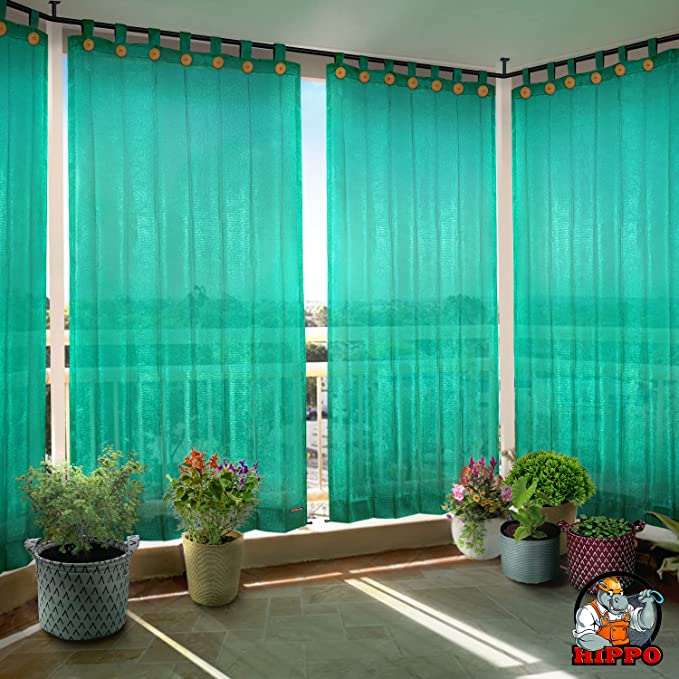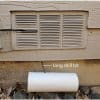Hanging curtains properly can be difficult, especially if you don’t have the right tools. However, that’s no reason to avoid buying and hanging beautiful new curtains in your home or office! A little preparation, patience, and simple rules will help you hang your curtains, so they look just as good as they did in the store—and last even longer than their original material would have allowed.
Take a look at these tips to learn how to hang curtains most safely and efficiently possible.
What Tools Do I Need?
Before you hang your curtains, you will want to ensure you have the proper hardware and tools. For example, if you’re hanging rods near a window frame, the first thing you’ll need is a stud finder to locate the wall studs. A stud finder helps prevent damage to your walls, which can occur if you try to hang a curtain rod without attaching it to the studs. You should also invest in a level to install all of your curtain rods at the same height.
Screws and anchors are necessary for each bracket, while nails or screws can be used to hang your drapery rod. Depending on what type of wall material you have, anchors are usually recommended for drywall, but screws may be enough for sturdier materials such as plaster or wood-paneled walls.
The last thing you’ll need is a drill with screwdriver bits and appropriately sized drill/driver bits for driving screws into the wall.
Preparing your Surfaces
After getting all the required tools, you’re all set to hang your new curtains. But before you even get out the measuring tape, you’ll need to check that your surfaces are ready for the job. Here’s what you have to prepare:
Windows
Make sure your window frames are in good condition. If they’re not, it could be a good time to look into replacement windows. Window frames will generally last 15 to 20 years, depending on the quality of installation and maintenance. So, if they’re starting to look worn out, it’s good to replace them before installing new curtains.
Walls
Once you’ve checked your windows and floors, it’s time to make sure your walls can hold the weight of curtain rods and hardware. If you have plasterboard walls, test if they can support the weight by pushing a nail into it with your finger. If it goes straight through without much force, use a nail anchor or dry.
Hanging Curtains on Nails
Hanging curtains on nails is a simple and inexpensive method of hanging curtains. It’s ideal for shorter curtains, such as those just under 6 feet long. The process involves using a hammer and nails to attach your curtain rod to the wall.
Step 1 – Measure and Mark
Measure the height of your curtains, then mark where you want to place them on the wall with a pencil.
Step 2 – Drill Holes
Using a drill bit that is slightly smaller than the diameter of your curtain rod, drill holes into the wall at each mark. This will allow you to screw in hooks for hanging your curtains.
Step 3 – Install Hooks
Screw hooks into the holes you drilled in Step 2, then hang your curtain rod from them.
Types of Nails
The most common types of nails used for hanging curtains are:
Box nails
Also known as brads or pin nails, these are small and round with a flat top and bottom. They are used for lightweight fabrics such as muslin and netting.
Wooden pegs
These are longer than box nails and have a pointed end to sink into the wood. They are ideal for heavier fabrics such as cotton and linen.
Long curtain hooks
These are similar to wooden pegs but have a hook at the end so they can be easily attached to a curtain rod.
How Much Weight will My Rod Support?
The amount of weight your curtain rod can hold is determined by the size of the rod and the type of bracket it has. Some rods are hollow, and some are solid, with the latter being able to handle heavier curtains. The brackets on either end of your rod also affect how much weight it can hold. For example, a bracket that features two screws or nails into the wall can support more than one that has only one screw or nail.
When using a tension rod, you should also ensure that it is strong enough for your needs. For example, if you have heavy drapes, then you may need to purchase a thicker tension bar.
If you’re unsure about whether or not a particular curtain rod will be able to hold the weight of your drapes, it’s best to err on the side of caution and purchase something stronger than what you think you’ll need.
It is Time to Install the Curtains!
So, if you want to hang curtains curtain installation at home, consider this guide carefully. Take each point and advice seriously, and be sure to get the proper result you desire. Then, soon enough, you will be enjoying your new curtains in your windows without a care in the world!








